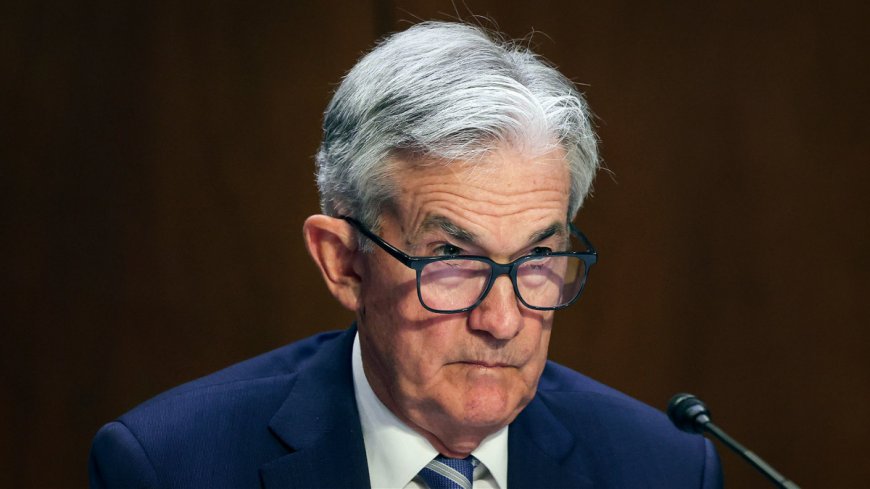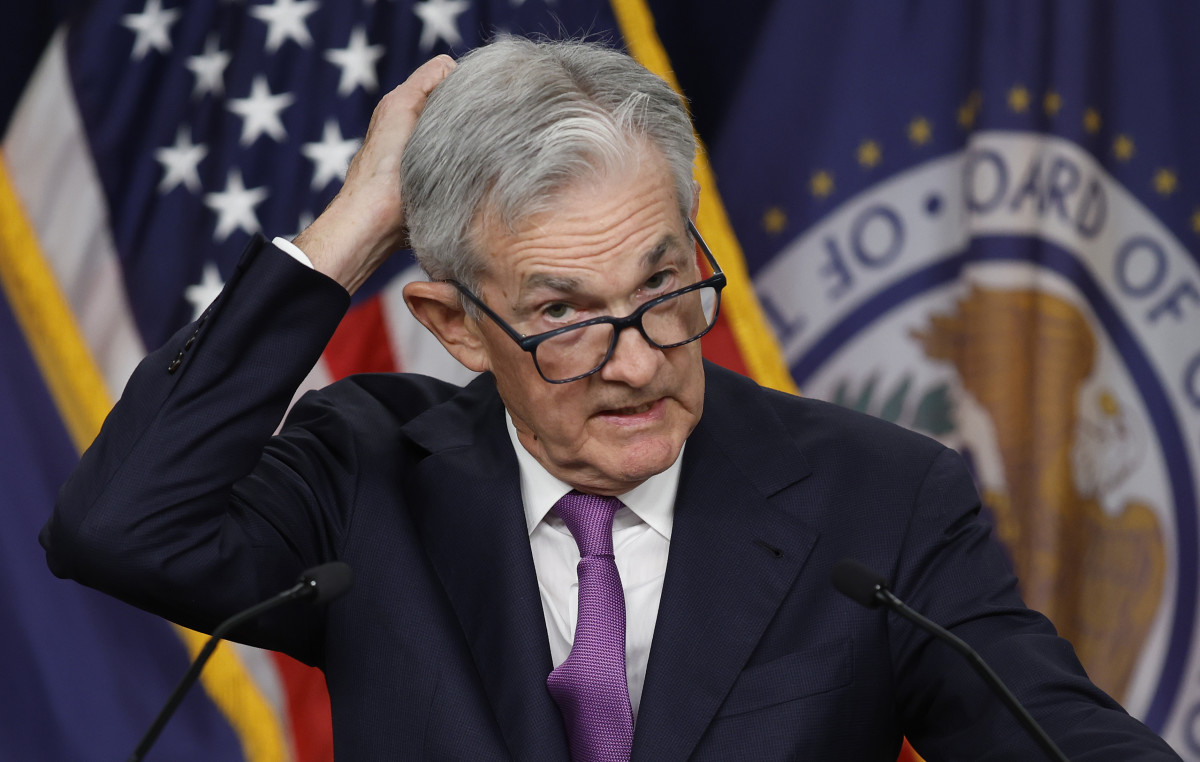Fed members just hat-tipped what's next for interest rates
Fight the Fed, sure, but for how long?

"Don't Fight the Fed" is a fundamental financial-market shibboleth that most investors absorb with their baby food.
The dictum makes sense: The Federal Reserve acts not only as the U.S. central bank but also as the effective interest-rate-setting body for the rest of the world, given the domestic economy's exceptionalism and the dollar's power and ubiquity in global commerce.
And financial-market arithmetic is fairly easy, at the base level, to understand: higher interest rates = lower asset prices.
Related: Nvidia stock is key to the Nasdaq making new record high
So why are stocks continuing to set records, at home and abroad, when Fed officials are out in force telling anyone willing to listen that they're not in a hurry to cut rates this spring and may even decide to wait deep into the summer to reverse some of the most aggressive policy tightening in a generation?
It's a question that's haunted markets this year and largely undermined the narrative surrounding the S&P 500's march past the 5,000-point level this week. That move cemented the benchmark's bull run from last October's lows and now values blue-chip corporate America at nearly $42 trillion.
First, many investors are concerned by the narrow breadth of this year's rally, which LPL Financial's chief technical strategist, Adam Turnquist, notes has been powered by just a few stocks.
"Amazon, Meta, Microsoft, and Nvidia have done most of the heavy lifting," contributing nearly 75% of the S&P 500’s total return this year, he said. "That's more than double the contributions from the top four stocks during this time last year."
Lofty S&P 500 valuation despite high rates
Oscar Wilde once wrote that a cynic is someone "who knows the price of everything and the value of nothing."
That's an apt phrase to remember when the S&P 500 point level — its "price" — tops 5,000 because valuations are also lofty. The benchmark's forward price-to-earnings multiple rose to 20.4 times this week, the highest in at least two years and well ahead of the historical average of around 15.7 times.
"Valuations remain a hot topic, with the S&P 500's price-to-earnings ratio hovering around the 92nd percentile of its historical valuation, raising eyebrows among some investors," according to a recent note from market research firm Toggle AI.
Related: Nvidia stock is key to the Nasdaq making new record high
Saxo Bank strategists note that, while stocks still show better long-term value prospects than government bonds, the high forward p/e multiples mean that "any reversal in [market] sentiment could be quite big and reset equities by up to 10%."
And while the Fed might not be trying to induce a stock-market pullback, its recent messaging suggests it is at least a bit concerned that the financial conditions, which drive credit growth and economic activity, are probably too easy.
Federal Reserve members say patience is a virtue
"The unexpected strength in recent GDP and labor-market data exemplifies the ongoing resilience of demand and highlights that the anticipated slowdown in activity may take some time,” Boston Fed President Susan Collins said last week during a speech to the Economic Club of New York.
“I think it is smart for us to take our time,” she added.
That view was echoed by Richmond Fed President Thomas Barkin, who also told the Economic Club of New York that "given robust demand and a historically strong labor market, we have time to build that confidence before we begin the process of toggling rates down.”
Even Philadelphia Fed President Patrick Harker, who noted "real progress" in slowing inflation over the past six months, highlighted the need for more downward price pressures, a balanced labor market, and resilient consumer spending in order to "stick the soft landing we remain optimistic to achieve.”
More Economy:
- Analysts revamp interest rate targets following Fed meeting
- Bond markets’ reaction to key data could be great for stocks
- Jobs report shocker: 353,000 hires crush forecasts, stokes inflation fears
However, investors still haven't quite grasped that messaging even as they've pulled back on their earlier bets for a March interest-rate cut from the Fed.
CME Group's FedWatch tool suggests traders are pricing in a 52.5% chance that the Fed will lower its benchmark borrowing rate by 0.25 percentage points in May. That rate currently sits between 5.25% and 5.5%.
New dots might change minds
Follow-on bets suggest Wall Street is looking for at least four cuts this year, possibly five, while official Fed projections suggest a maximum of three.
Furthermore, those projections could change dramatically when the Fed publishes its latest version of the so-called Dot Plots rate projections next month, given that officials will have two more inflation readings, as well as the February employment report, from which to gauge their new forecasts.
That could be why the world's biggest fund managers are pulling money out of stocks heading into next week's inflation data, which are expected before the market opens on Tuesday.
Related: Analysis: Economic soft landing? How about no landing at all
Bank of America's weekly Flow Show report noted a $15.6 billion outflow from U.S. equity funds last week, the biggest since September. Money-market funds are now holding record assets of more than $6 trillion.
"I am concerned that this rally is running out of steam," said Jay Woods, chief global strategist at Freedom Capital Markets, noting issues with the lack of market breadth.
"A pause or pullback is coming," he added. "But a major pullback? Probably not."
5,000 done. Once more into the breach
Turnquist of LPL Financial notes that stocks, having passed a round-number benchmark such as the 5,000 mark, tend to extend gains over the longer term.
"Of the last nine, the index posted a 12-month average return of 10.4% after clearing each milestone, with 78% of occurrences producing positive results," he said.
But he added, "There have only been two milestones that were not subsequently breached after being crossed." This suggests the potential for near-term weakness.
Fed Chairman Jerome Powell, for his part, is determined to narrow the scope for interest rate decisions to the economic data, not market performance.
Related: What happens to interest rates next may depend on this 'game-changing' trend
And he's stressed time and again that he's in no rush to make any changes.
"If the economy were to weaken, then we could reduce rates earlier and perhaps faster," he told CBS's "60 Minutes" last week. "If the economy [or inflation] were to prove more persistent, that could call for us to reduce rates later and perhaps slower."
With the S&P 500 having pocketed the 5,000-point mark, investors will be watching closely to see exactly how that plays out.
Related: Veteran fund manager picks favorite stocks for 2024
What's Your Reaction?

























































